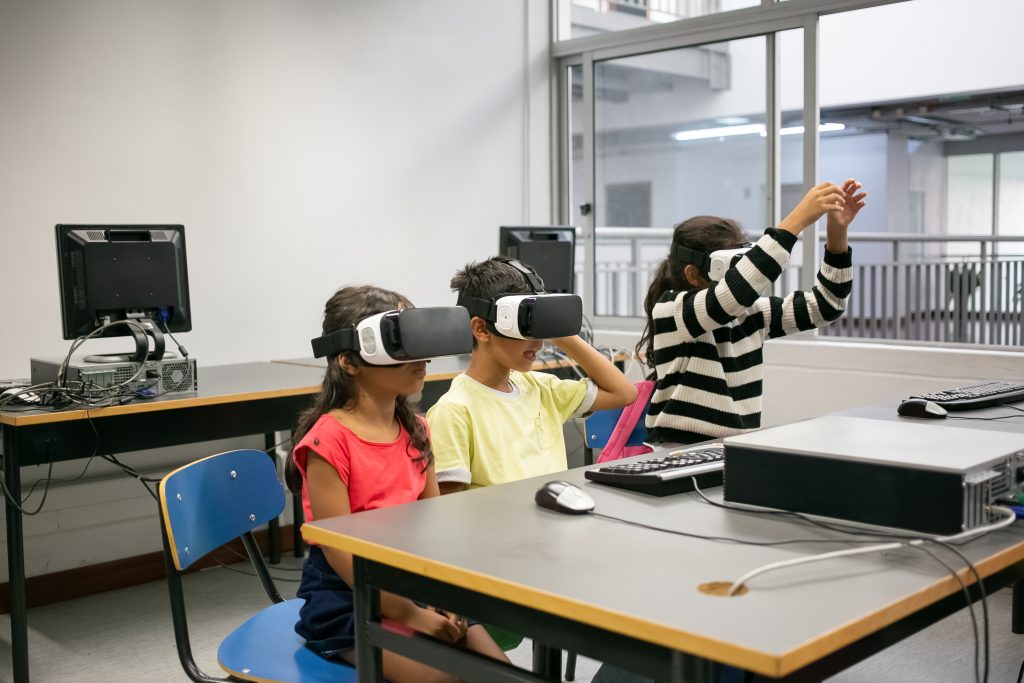The Role of Technology in Enhancing the Education Experience
Aiden Foster August 13, 2025
In the ever-evolving landscape of education, technology has emerged as a transformative force that has reshaped how we teach, learn, and interact in the classroom. From virtual classrooms to artificial intelligence-driven tutors, the integration of technology has created new opportunities for students and educators alike. As we move further into the 21st century, the role of technology in education continues to expand, providing innovative solutions to some of the most pressing challenges faced by schools, universities, and learners. In this article, we explore how technology is enhancing the education experience and why it is pivotal for the future of learning.

1. The Rise of EdTech Tools
Educational technology (EdTech) tools are no longer a luxury in modern classrooms – they have become essential. These tools help to facilitate and streamline the learning process for both teachers and students. EdTech applications are designed for every aspect of the educational experience, ranging from learning management systems (LMS) like Moodle and Google Classroom to interactive whiteboards like SMART Boards.
One of the most significant impacts of EdTech is the ability to customize learning experiences. Tools like Khan Academy and Duolingo, for example, use artificial intelligence (AI) to tailor lessons to individual student needs, ensuring that learners can progress at their own pace. Personalized learning is no longer just a theoretical concept; it is an achievable reality.
For teachers, technology offers a wealth of resources to enhance classroom engagement. Interactive presentations, real-time quizzes, and collaborative platforms like Padlet or Google Docs make it easier for students to participate and contribute during lessons. Technology also simplifies administrative tasks, allowing educators to automate grading and track student progress more efficiently. This frees up valuable time, allowing teachers to focus more on the pedagogical aspects of their job and less on administrative work.
2. E-Learning and Virtual Classrooms
One of the most significant advancements in education technology is the rise of e-learning and virtual classrooms. The COVID-19 pandemic forced schools worldwide to transition to online platforms, accelerating the adoption of remote learning. Platforms like Zoom, Microsoft Teams, and Google Meet quickly became household names, enabling students and educators to connect virtually, no matter their physical location.
Virtual classrooms have opened up new possibilities for students who were previously hindered by geographical or physical barriers. For instance, a student in a remote village can now access the same educational resources as someone in a metropolitan area. Online learning also allows for a flexible schedule, which is especially beneficial for non-traditional learners, such as adults looking to further their education while managing work and family commitments.
Moreover, online education offers a wealth of multimedia tools, from pre-recorded video lectures to interactive simulations, making learning more dynamic and engaging. For example, platforms like Coursera and edX provide access to courses from top universities worldwide, democratizing education and offering learners an unparalleled opportunity to gain new skills and knowledge at their own pace.
3. The Power of Artificial Intelligence (AI) in Education
Artificial intelligence (AI) is another technology revolutionizing the educational experience. Teachers and students are using AI-powered tools in various ways to improve teaching and learning. For instance, AI tutors like Squirrel AI are helping students with personalized tutoring, adapting lessons based on a student’s progress and performance. These systems can identify gaps in knowledge and provide targeted practice exercises, making learning more efficient.
AI is also transforming administrative functions. It can help schools and universities with predictive analytics, assisting in everything from course scheduling to identifying students at risk of falling behind. AI systems can analyze student data, such as attendance records, grades, and participation, to generate insights that help educators provide timely interventions and support to struggling students.
Additionally, AI’s natural language processing capabilities are improving educational resources such as chatbots, which provide instant answers to common student questions, saving time for educators and offering 24/7 support. For example, chatbots like “Jill Watson” have been used in university courses to provide students with quick responses to frequently asked questions, enhancing the overall learning experience.
4. Gamification and Interactive Learning
Another technology-driven trend gaining traction in education is gamification. By incorporating game-like elements into learning, such as earning points, badges, or progressing through levels, educators are making lessons more engaging and enjoyable. Games are inherently interactive and can encourage students to explore and experiment with concepts in a way that traditional learning methods might not.
For example, platforms like Kahoot! and Quizlet offer interactive quizzes and flashcards that can be used in the classroom or for self-study. These tools make learning more fun and help students retain information better by incorporating elements of competition, rewards, and instant feedback.
Moreover, virtual reality (VR) and augmented reality (AR) are pushing the boundaries of what gamification can achieve. These technologies offer immersive experiences that bring abstract concepts to life. For instance, VR can be used to simulate historical events, allowing students to experience history firsthand, or to explore the human body in 3D, making science lessons more interactive and tangible.
5. Access to Global Learning Communities
Technology has also made it easier for students to connect with peers, educators, and experts from around the world. Online forums, social media platforms, and virtual study groups provide opportunities for students to engage with diverse perspectives and collaborate across borders. This global connectivity is particularly important in an increasingly globalized world where cross-cultural communication and understanding are essential skills.
Platforms like LinkedIn Learning or Skillshare offer opportunities to learn not only from educators but also from professionals in the field, allowing students to gain insights into real-world applications of their studies. Additionally, social media channels such as Twitter and Facebook groups have created informal communities where students can ask questions, share resources, and support each other.
Global collaboration fosters a deeper understanding of different cultures and viewpoints, creating a more inclusive and comprehensive learning environment.
Conclusion
As we look to the future, technology’s role in enhancing the education experience will continue to expand. It has already transformed classrooms, provided personalized learning opportunities, and offered flexible access to education. Whether through virtual classrooms, AI-driven tools, or interactive gamified experiences, technology is creating a more dynamic, accessible, and engaging education system.
While there are challenges to be addressed – such as the digital divide and the need for teacher training in new technologies – the benefits are undeniable. By embracing these advancements, education systems can prepare students for a rapidly changing world, equipping them with the skills and knowledge needed to thrive in the digital age.
References:
- Luckin, R. (2017). Enhancing Learning and Teaching with Technology: What the Research Says. London: Routledge. Available at: https://www.routledge.com (Accessed: 13 August 2025).
- Bower, M. (2019). Design of Technology-Enhanced Learning: Integrating Research and Practice. Routledge. Available at: https://www.routledge.com (Accessed: 13 August 2025).
- Selwyn, N. (2016). Education and Technology: Key Issues and Debates. London: Bloomsbury Academic. Available at: https://www.bloomsbury.com (Accessed: 13 August 2025).








